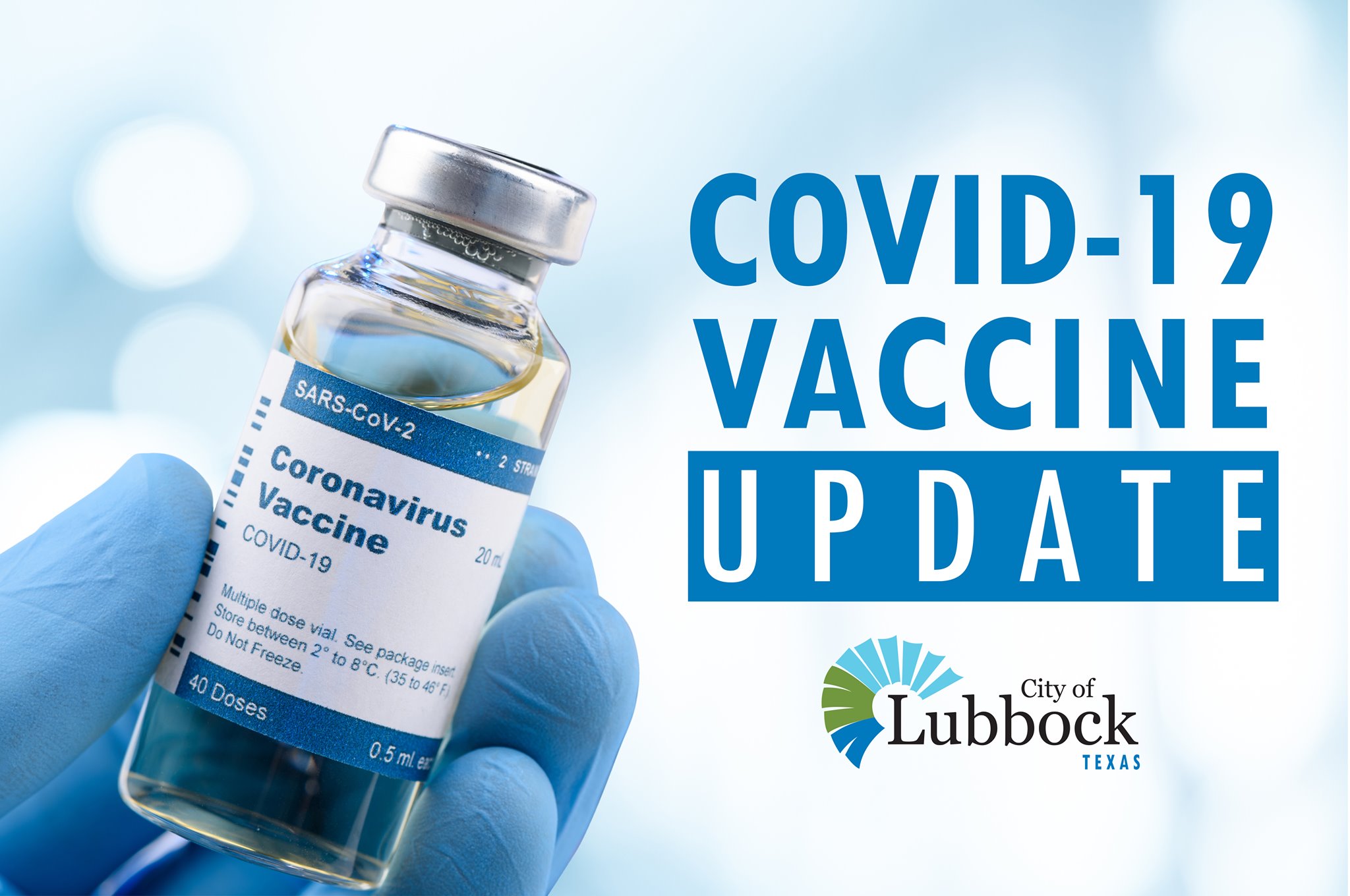What would you like to do?

Lubbock, TX
COVID-19 Vaccine Clinic Update For This Week
After a delay due to last week's weather, the Public Health Department received its vaccine shipments for this week.
The City of Lubbock will hold vaccine clinics in the Lubbock Memorial Civic Center Exhibit Hall on the following days/times:
- Wednesday, February 24, 10:00 a.m. - 4:00 p.m.
- Thursday, February 25, 2:00 p.m. - 8:00 p.m.
- Saturday, February 27, 10:00 a.m. - 3:00 p.m.
If you were scheduled to receive your second vaccine today, February 23, you can come to any other clinic time this week without rescheduling.
If you are unable to attend on one of these dates, please call the health department at 775.2933 to reschedule.
Citizens will be able to make an appointment for this week's clinics starting at 1:00 p.m. today, February 23.
All individuals in Phases 1A and 1B seeking a vaccination are encouraged to make an appointment.
- Those wishing to make an appointment online can do so by visiting mylubbock.info/covid19vaccine
- Those wishing to make an appointment by phone can do so by calling the City of Lubbock Public Health Department at 806.775.2933.
- Those wishing to schedule their second dose can do so by visiting mylubbock.info/dose2 or by calling the Public Health Department.
- Appointments are limited and walk-ups are highly discouraged. Individuals with appointments will be given priority, and walk-ups are not guaranteed a vaccine.
The City will make an announcement once all the clinics are booked.
Additional vaccine clinics will be held in the coming weeks.
Phase 1A individuals must present a badge or other agency identification to be admitted to the clinic. If you are eligible for vaccine through your employer, we request that you access the vaccine through that system.
The Texas Department of State Health Services defines Phase 1A and 1B as follows:
Phase 1A
• Paid and unpaid workers, ages 18+, in hospital settings working directly with patients who are positive or at high risk for COVID-19. Such as but not limited to:
- Physicians, nurses, respiratory therapists and other support staff (custodial staff, etc.)
- Additional clinical staff providing supporting laboratory, pharmacy, diagnostic and/or rehabilitation services
- Others having direct contact with patients or infectious material
• Long-term care staff working directly with vulnerable residents. Includes:
- Direct care providers at nursing homes, assisted living facilities, and state supported living centers
- Physicians, nurses, personal care assistants, custodial, food service staff
• EMS providers who engage in 9-1-1 emergency services like pre-hospital care and transport
• Home health care workers, including hospice care, who directly interface with vulnerable and high-risk patients
• Residents of long-term care facilities
• Staff in outpatient care settings who interact with symptomatic patients. Such as but not limited to:
- Physicians, nurses, and other support staff (custodial staff, etc.)
- Clinical staff providing diagnostic, laboratory, and/or rehabilitation services
- Non 9-1-1 transport for routine care o Healthcare workers in corrections and detention facilities
• Direct care staff in freestanding emergency medical care facilities and urgent care clinics
• Community pharmacy staff who may provide direct services to clients, including vaccination or testing for individuals who may have COVID
• Public health and emergency response staff directly involved in administration of COVID testing and vaccinations
• Last responders who provide mortuary or death services to decedents with COVID-19. Includes:
- Embalmers and funeral home workers who have direct contact with decedents
- Medical examiners and other medical certifiers who have direct contact with decedents
• School nurses who provide health care to students and teachers
Phase 1B
• People 65 years of age and older
• People 18 - 64 years of age with at least one chronic medical condition that puts them at increased risk, such as but not limited to:
- Cancer
- Chronic kidney disease
- COPD (chronic obstructive pulmonary disease)
- Heart conditions, such as heart failure, coronary artery disease or cardiomyopathies
- Solid organ transplantation
- Obesity and severe obesity (body mass index of 30 kg/m2 or higher)
- Pregnancy
- Sickle cell disease
- Type 2 diabetes mellitus
Other News
-
Lubbock Public Health & Lubbock Animal Services Remind Community of Rabies Safety Following Recent Bat Encounters
-
City of Lubbock Animal Services (LAS) Warns Public of Pet Adoption Scam
-
Roadwork on Portion of 19th Street to Begin Thursday
-
Gas Line Work to Close Portion of Avenue P Starting Friday
-
The Buddy Holly Center Presents a DIA de LOS MUERTOS Workshop
